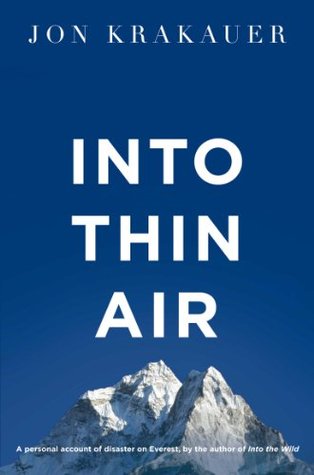More on this book
Community
Kindle Notes & Highlights
by
Jon Krakauer
Read between
January 9 - March 15, 2025
Lou mused that visiting Beck was both sad and triumphant. It hurts to see Beck like this: rebuilt nose, facial scars, disabled for life, Beck wondering if he can practice medicine again, and the like. But it was also remarkable to see how a man can accept all this and be ready to move on in life. He is conquering this. He will be victorious. Beck had only nice things to say about everyone. Beck doesn’t play the blame game. You may not have shared political views with Beck, but you would share my pride in seeing how he has handled this. Somehow, some day, this will net out in a positive way for
...more
I received it soon after learning that the list of victims had grown to include Lopsang Jangbu. In August, after the retreat of the monsoon from the high Himalaya, Lopsang had returned to Everest to guide a Japanese client up the South Col and Southeast Ridge route. On September 25, as they were ascending from Camp Three to Camp Four to launch their summit assault, a slab avalanche engulfed Lopsang, another Sherpa, and a French climber just below the Geneva Spur and swept them down the Lhotse Face to their deaths. Lopsang left behind a young wife and a two-month-old baby in Kathmandu.
But in mid-November, during a visit to his home in Kazakhstan, a bus he was riding in crashed. The driver was killed and Anatoli received severe head injuries, including grave and possibly permanent damage to one of his eyes.
The debate over what happened on Everest in 1996 took a terrible turn on Christmas Day 1997, six weeks after publication of The Climb, when Anatoli Nikoliavich Boukreev was killed in an avalanche on Annapurna, the world’s tenth highest mountain.
Boukreev and Vinogradski paused during their descent to Camp Four to cover Scott Fischer’s body with rocks and snow at 27,200 feet. “This last respect was for a man I feel was the best and brightest expression of the American persona,” Boukreev mused in The Climb. “I think often of his brilliant smile and positive manner. I am a difficult man and I hope to remember him always by living a little more by his example.”
Even when ascended by its easiest aspects, Annapurna—26,454 feet high—is regarded as one of the deadliest mountains in the world: for every two climbers who have reached its summit, one has died.
The highest peaks on each of the seven continents are: Everest, 29,028 feet (Asia); Aconcagua, 22,834 feet (South America); McKinley (also known as Denali), 20,320 feet (North America); Kilimanjaro, 19,340 feet (Africa); Elbrus, 18,510 feet (Europe); Vinson Massif, 16,067 feet (Antarctica); Kosciusko, 7,316 feet (Australia).
*Devout Buddhists believe in sonam—an accounting of righteous deeds that, when large enough, enables one to escape the cycle of birth and rebirth and transcend forever this world of pain and suffering.
After meeting Boukreev in 1997, Moro became one of his closest friends. “I loved and love (like friend, of course) Anatoli Boukreev so much,” Moro told me, “that after I met him I changed my life, my projects, my dreams. Probably only his mother and his girlfriend, Linda, loved him more.” Moro, as it happens, disagrees strongly with my portrayal of Boukreev in this book. “You didn’t understand who Anatoli really was,” Moro explained. “You are American; he was Russian. You were new to 8,000-meter peaks; he was the best of all time at these altitudes (nobody else had climbed 21 times to a summit
...more


